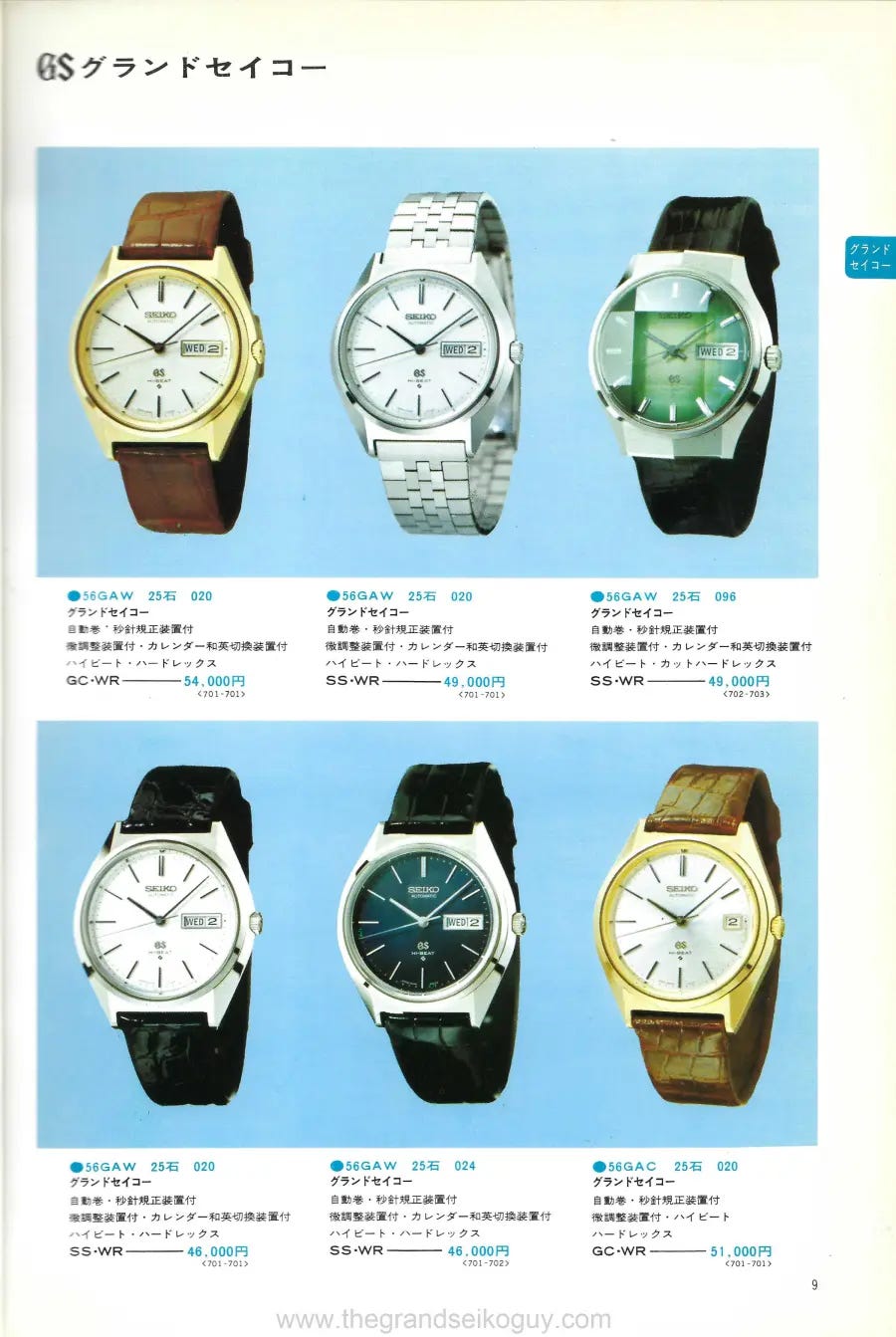Preamble
For the benefit of those subscribers who have signed up recently, each week I publish an article featuring scans of vintage Grand Seikos that appeared in the Seiko catalogues of the 1960’s and 1970’s.
Although based on the articles originally published on TGSG website, these articles will be updated where appropriate with additional knowledge gained in the three or so years since they were first made available.
Additionally, since I now have the complete set of the catalogues, I am able to publish these articles in the correct chronological order - something that wasn’t possible when posting to the main website since, when starting out documenting the catalogues, I hadn’t completed my collection of them.
You can view the previously published newsletters in this series here.
The Seiko 1973 Catalogue Volume 2
Volume 2 of the 1973 Seiko catalogue sees a return to the book format, rather than the loose-leaf in binder format of 1973’s volume 1 and the 1972 catalogues. It is also the first of the catalogues to be called a “Volume”, rather than a “Number”.
Continuing the trend established in the previous catalogue, once again we see a significant reduction in the number of Grand Seiko references depicted in the range.
Just 13 men’s references are featured, and – for the first time ever in a catalogue – there are no new Grand Seiko models introduced.
Following the structure first introduced in the 1972 catalogue, the initial pages highlight the references in the range with precious metal cases. After the first two pages that feature quartz watches, we find two pages featuring Grand Seikos.
5646-7005, 5645-5000, 5645-7005
5641-5000, 5641-7005
For all but one of the references featured on these two pages, it would be their final catalogue appearance.
Comparing the prices show here with those in the 1972 catalogue, we can see that all five watches have had their price reduced by 4,000 Yen. Why this would be is a bit of a mystery – it is extremely rare for any vintage Grand Seiko to have a retail price change, regardless of how long it was available in the range.
Looking at the quartz references with 18K gold cases, we also see slight price adjustment downwards, so we can only assume the price of gold had some bearing on the matter. This does seem rather odd though, considering gold closed 1972 at around $65 per ounce, the first quarter of 1973 it closed at $90, and the first half of 1973 closed at $123 per ounce.
So basically the price of gold close to doubled over the first six months of 1973, and yet Seiko reduced the price of their 18K gold cased watches for the second half of the year. Whilst there was a sudden appreciation in the Yen against the dollar at the start of the year – due to the Japanese monetary authority’s decision to allow the Yen to float freely against the dollar – that “only” resulted in a change from around 300 to 265 Yen against the dollar, roughly a 10% improvement in the Yen’s buying power of USD based commodities – nowhere near sufficient to overcome the rapid increase in the value of gold. All very odd!
The regular section of the catalogue – with the watches presented in the more familiar 3×2 grid – started on page 5, with of course quartz references leading the way.
The final Grand Seikos to be featured in this catalogue make their appearance on pages 9 and 10.
Just eight steel or cap gold cased references remain in the Grand Seiko range, and all of them carry over from the 1973 volume 1 catalogue. They really don’t make for a particularly compelling offer, and I can’t help wonder whether many retailers simply did not bother to stock the range anymore.
One further claim to fame that this catalogue can make – every single Grand Seiko reference featured is from the 56GS series. That means no 36,000 bph movements, and nothing from Daini-Seikosha.
Additional models dropped from the 1973’s first volume are all the 5645/6-5010’s, all 5645/6-8000 references, and the 5641-7000.
Of the regular catalogues (not including supplements or the Special Luxury Catalogues), this is the first time since the very first catalogue – 1966’s volume 1 – that all men’s Grand Seikos featured are from a single series.
All in all, it must have been a rather depressing time for those who appreciated the quality of the mechanical Grand Seikos to see the brand die a slow and agonizing death.
Five more catalogues to go, taking us up to the close of 1975, during which period there will be just five new vintage Grand Seiko references introduced.
See you next week, for what will be the shortest newsletter in this entire series!








